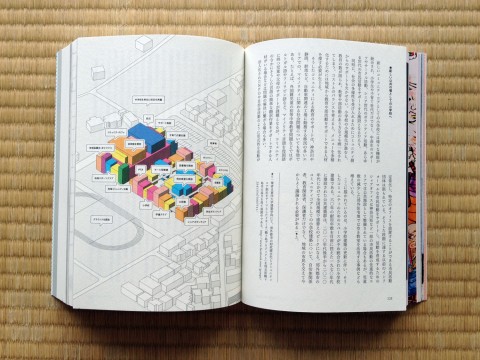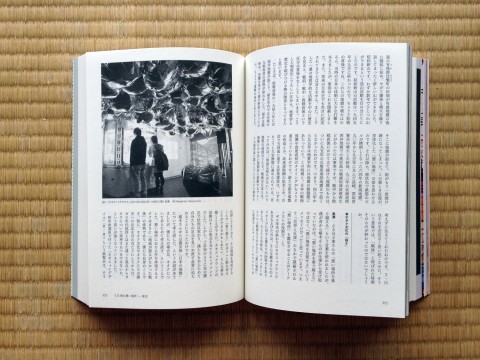News, Reviews, Reports
Genron and Shisouchizu Beta — Japan 2.0
Sometimes a close friend more or less disappears off the map for a couple of years. Only sporadic email contact assures you they’re still breathing. This is how it has been with my very talented friend Naoki Matsuyama. Here are some samples from the relatively few emails Naoki has sent me in the past year:
It’s so busy right now that I haven’t got time to think about anything else.
Gmail is telling me that it took me 14 days to reply to your email. I’m mortified. I had a couple of big business trips and a transition to a new company structure and I really couldn’t think about anything else.
What Naoki has been thinking about so intensely is his work as an editor at Genron, a publishing company behind the annual, high-quality journal Shisouchizu Beta, which attempts to rethink what direction this country should take in the 21st century, especially in the aftermath of March 11, 2011.
Established in Tokyo in 2010 by critic and author Hiroki Azuma, Genron is an English-based web portal for critical discourse on Japan. Its editorial mission reflects on how, in the second half of the 20th century, Japanese society underwent major political and cultural shifts that propelled have made it a huge exporter of technology and pop culture, and yet its intellectual discourse remains little known abroad.
It also focuses on the significant turning point that Japan finds itself at today, faced with issues of decline and regeneration in the immediate future. Genron posits that “For the next 5 to 10 years, Japan will become a sort of testing ground for diverse political, social and cultural undertakings. We believe that persistently sending out messages from this “site for testing” to English speaking readers beyond the Japanese speaking world, will be of benefit not only to some researchers and fans, but also to the general public. “genron” starts as a website for presenting Japanese critical discourses, but it is not limited to that and is in fact potentially intended for anyone who thinks about the new societies and cultures of the 21st century.”
When Naoki and I finally sat down to dinner a couple of weeks ago and he handed me a copy of the latest issue of Shisouchizu Beta, entitled “Japan 2.0,” it was immediately evident to me why he had been so busy. It’s a thick publication, with 515 pages of Japanese articles and 113 pages of (excellent) English translations and abstracts. Great attention has been paid to the quality and diversity of design and paper stock, making this a very handsome book indeed.
With article titles ranging from “Plan 2.0 for Remodeling the Japanese Archipelago” to “The Disempowered Japanese Provinces – Is Consumer Society an Enemy of Democracy?” the current issue contains some hard-hitting words that are reminiscent of Japan’s 1960s and ‘70s leftwing radicalism. There is an interview with Takeshi Umehara, a Kyoto-based philosopher who believes that the Fukushima nuclear accident was nothing short of a “civilizational disaster.” There is also a transcript of Takashi Murakami’s speech at the opening of his “Murakami – Ego” exhibition at Mathaf in Doha earlier this year, in which he counters the criticisms people have made of his mass-produced approach to art-making and reasserts his long-held belief that Japanese people have to rid themselves of their “softness” if they are to fulfill their true potential.
Perhaps the most insightful article is a conversation on the future of journalism—mainly in the Chinese context—between China- and Japan-based journalists Michael Anti, Daisuke Tsuda and Hiroki Azuma. Among the various topics they discuss, Anti explains how, with no short-term political agenda to adhere to, Chinese reporters sent to cover the post-3/11 recovery for more protracted periods of time were fully able to see the humanity of their subjects. Impressed by the relief effort (especially in contrast to the Chinese government’s handling of the 2008 Sichuan Earthquake), they left Japan with highly favorable impressions that they then relayed to their readers. This was heartening to read, yet at the same time, utterly depressing in light of the recent territorial dispute over the Diaoyu/Senkaku Islands, which has so quickly undone all of that bridge-building. It takes months, years, even decades to build trust between two mutually suspicious societies, but in only a matter of hours their politicians and other extremist elements can force everybody back to square one through nationalistic posturing and fear-mongering.
The issue also contains a pull-out supplement, Genron’s draft for a new Japanese constitution. Among various things, this proposal calls for recognition that “in the future, Japanese culture will not solely belong to Japan, and different cultures will in turn flow into Japan.”
About & Community
A place to keep abreast of Art Space Tokyo related news, reviews, events and updates.
Art Space Tokyo is a 272 page guide to the Tokyo art world produced and published by Craig Mod & PRE/POST.
It was originally published in 2008 by Chin Music Press.
Current Tokyo exhibitions
Powered by Tokyo Art Beat


